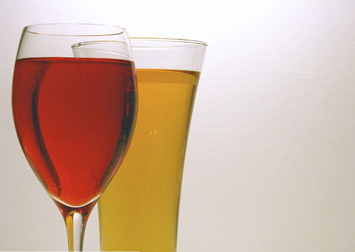
In the absence of air, yeast cells transform sugars into carbon dioxide and alcohol.
From the different yeast strains, researchers are able to produce beer, wine or even ethanol-based fuel!
 In the absence of air, yeast cells transform sugars into carbon dioxide and alcohol.
In the absence of air, yeast cells transform sugars into carbon dioxide and alcohol. In the absence of air, yeast cells transform sugars into carbon dioxide and alcohol.
In the absence of air, yeast cells transform sugars into carbon dioxide and alcohol.